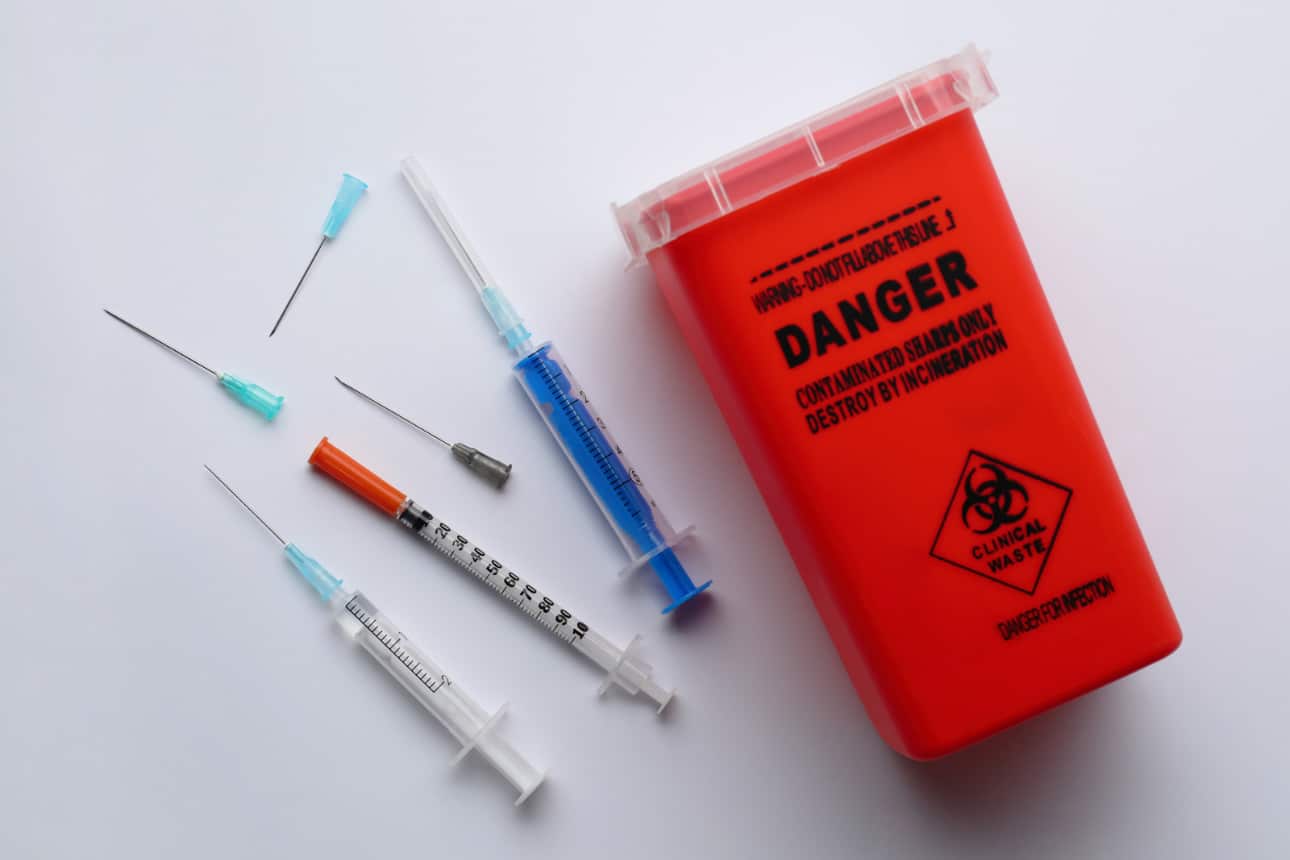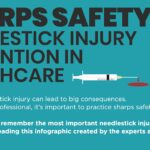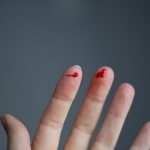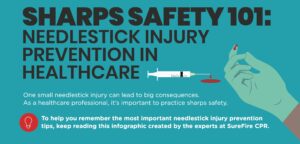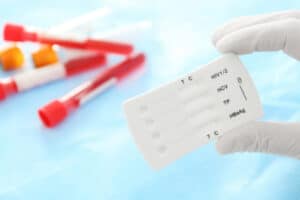Needles and other contaminated sharps can spread bloodborne pathogens such as human immunodeficiency virus (HIV), hepatitis B virus (HBV), and hepatitis C virus (HCV). If you handle contaminated sharps or needles at the workplace as a healthcare provider, it’s important to understand sharps precautions. Following protocol for safety with sharp objects will help reduce your risk of infection.
What are contaminated sharps and needles?
So, what are sharps? Any medical instrument can be considered a sharp if it is able to pierce or puncture the skin. Sharps are objects that could penetrate the skin including needles, scalpels, broken glass, capillary tubes, and dental wires.
When a sharp is contaminated, it means that blood or other potentially infectious materials could be present. Contaminated sharps carry bloodborne pathogens and pose health risks such as human immunodeficiency virus (HIV), hepatitis B virus (HBV), and hepatitis C virus (HCV). These bloodborne diseases are often transmitted through sharps injuries.
How to protect yourself when handling contaminated sharps and needles
To prevent injury and reduce the risk of spreading bloodborne pathogens, it’s important to practice careful handling of needles and other contaminated sharps.
- Wear personal protective equipment: When handling sharps, it’s important to wear personal protective equipment (PPE) to keep yourself safe. Wear PPE such as gloves, face shields and face masks, goggles, and more. Always remember to sanitize and wash your hands after handling medical waste.
- Use sharps containers: Contaminated sharps must be disposed of in designated sharps containers, as outlined in the OSHA requirements for sharps containers. These containers should be puncture-resistant, leakproof, and labeled appropriately. It’s also important to ensure sharps containers close completely and are stored upright to prevent spills.
- Dispose of sharps promptly: Dispose of contained sharps immediately after use or as soon as possible. Sharps containers should be placed in locations that are conveniently accessible to where sharps are being used.
- Do not shear or break contaminated sharps: Never attempt to bend, recap, or remove needles from contaminated sharps unless absolutely necessary, such as when required for specific procedures. If there is no alternative, follow OSHA safety guidelines such as the one-handed recapping technique.
- Do not pick up contaminated glass by hand: When cleaning up contaminated glass, do not pick it up by hand. OSHA recommends using mechanical means such as tongs or a brush and dust pan.
- Handle containers carefully: Sharps containers should be changed out regularly to prevent overfilling. When handling the container, use caution and make sure it does not spill. If there is potential for leakage, the entire container should be placed in a secondary container.
Following these guidelines will help prevent injury and the spread of bloodborne pathogens.
What to do in case of accidental exposure
If you receive a sharps injury, it is important to take immediate action. Keep the following in mind:
First, promptly address the exposure site,
- Wash the needlestick or cut with soap and water
- Apply pressure to any lacerations to minimize bleeding
- Flush mucous membranes using water
Once you’ve provided immediate care, seek further medical treatment.
- Your medical provider will help you assess the risk associated with the exposure
Report the injury to your supervisor.
- You may be asked to complete an incident report. This will help determine the risk of infection and prevent further incidents
Practice Sharps Safety
Remember to prioritize safety when handling sharps and any other dangerous objects. It’s always better to be safe than sorry.
If you could encounter hazardous sharps on the job, be sure to know how to safely pick up and handle contaminated sharps. SureFire CPR’s bloodborne pathogens training is a great way to learn everything you need to know. Our convenient, effective training courses are designed for healthcare workers and taught by industry experts. Learn more and sign up today.
FAQ’s
When handling contaminated sharps you should do what?
ou should always wear personal protective equipment (PPE) and follow what should be done with a used needle, per OSHA guidelines. This includes using a sharps container and prompt disposal.
What are your 3 best sharp safety practices?
First, always use sharps containers and dispose of sharps appropriately. Second, you should wear personal protective equipment when handling sharps or are at risk of encountering potentially infectious materials. Lastly, remember to avoid recapping or bending contaminated sharps. It is a misconception that you should bend all your needles.
What color label should a contaminated sharps container be?
A contaminated sharps container should be color-coded red or clearly labeled.
What PPE should be worn when handling sharps?
When handling sharps, wear personal protective equipment such as gloves, goggles, face shields, faces masks, and any other appropriate safety gear.
Should you recap a contaminated needle?
You should not recap a contaminated needle unless absolutely necessary, such as for specific medical or dental procedures.

